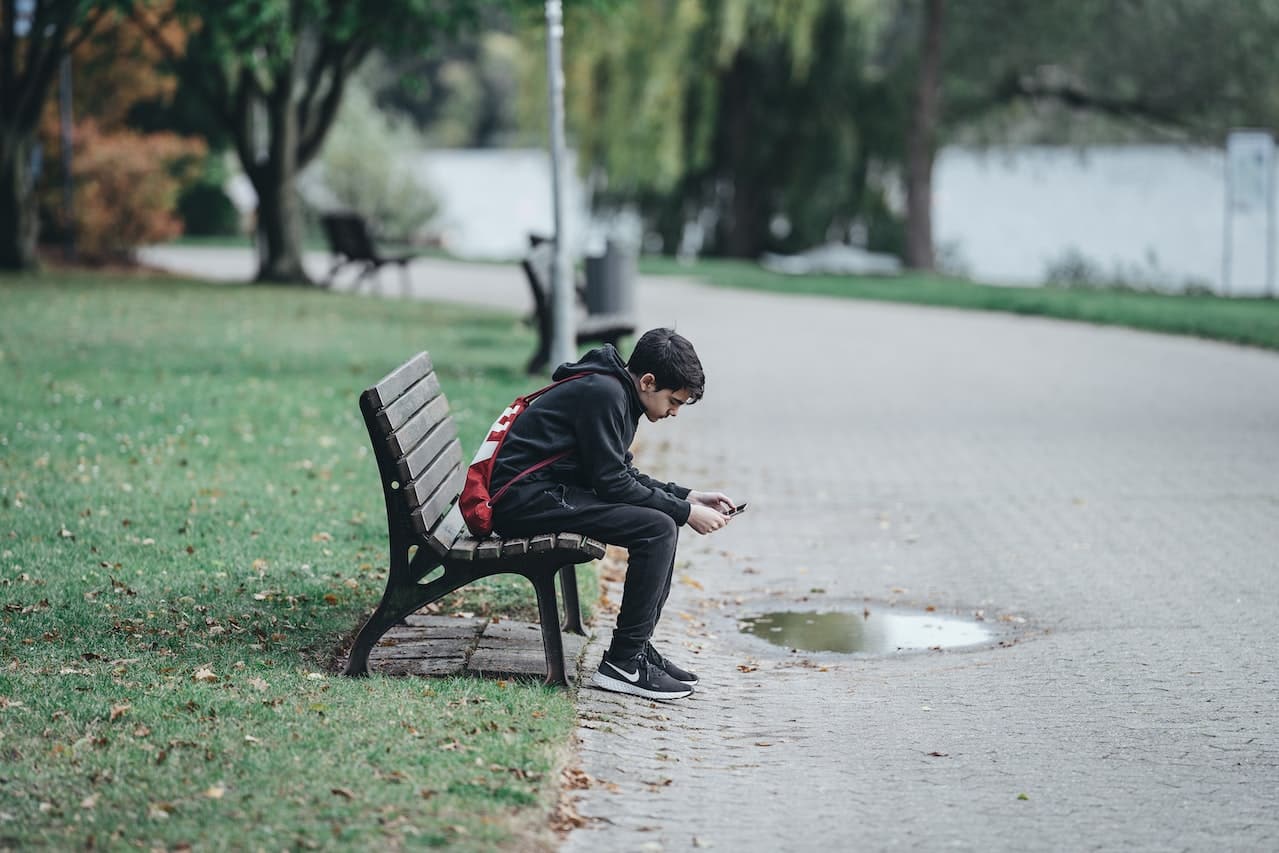Making the internet safer, engaging and evidence-based for tweens

Key takeaways for caregivers
- Building healthy relationships with technology involves not only protecting youth, but also supporting their positive experiences online.
- Helping middle schoolers navigate the digital world involves strategies similar to those used for their in-person activities: monitoring, spending time on the internet together when possible, educating them about risks, and communicating.
- Ongoing communication is critical. Talk about your values and expectations, ask what young users are doing online, and listen to how they feel about those experiences.
- Parents cannot do it alone. Digital technology companies and policymakers need to ensure that the online spaces where young people spend their time support healthy development while also keeping them safe.
Protecting and supporting youth on the internet are both important
Parents often ask what they can do to protect their children online. This is a good question. But another important question that should be asked is how can we better support our youth on the internet?
As mothers to tweens and teens, we are always looking for ways to protect our children from harm. One of us is also a developmental psychologist who has studied adolescents’ mental health for more than two decades, learning that we need to both protect and support our children – particularly around the middle school years as they make the transition to adolescence and into online spaces.
This is why we recently released a report on what research tells us about amplifying the benefits of digital technology for this age group and calling on technology companies and policymakers to adopt an evidence-based approach to protecting and supporting youth. But even as we urge technology creators to do better, there are steps parents and other caregivers can take to both protect and support positive digital technology use for young people.
Promoting healthy development and well-being with positive online experiences
Early adolescence (from about 10 to 13 years old, or the middle school years) is an important window when positive experiences that support learning and connection can affect development. Going on the internet to create, contribute, or connect can be positive experiences for young people. Online experiences offer new spaces for adolescents to express their creativity, explore who they are and where they fit in, support causes they care about, and connect with peers in ways that can enhance their relationships.
Co-viewing, creating, and participating in online spaces can open opportunities for positive joint experiences and allow parents to identify any risks or content that makes them uncomfortable.
Encouraging these kinds of positive experiences online does not require an entirely new set of parenting skills. Instead, parents can use strategies similar to those used when children walk out the door to go to school or hang out at the park with their friends. Parent cannot be everywhere or see everything. But they can find out who their children are with, what they are doing, and how they feel about it, which can reduce problems. This kind of monitoring and communication can also help youth as they navigate the online world.
Keeping youth safe on the internet
Parents should consider some critical issues to ensure their children are engaging with online content safely. During early adolescence, when youth are particularly sensitive to social feedback and belonging, increased exposure to bullying, pornography, unhealthy body images, and harmful targeted advertising can have amplified effects.
Parents should also be aware that some adolescents, for example, those with mental health problems and those who may already be struggling with body image issues, may be more susceptible to viewing negative content on the internet and having negative online experiences than their peers. Knowing your child is key.
Caregivers should also understand that technology use also leaves a digital trace that can follow young people into adulthood by creating a type of permanent record of images and comments that would otherwise be forgotten or excused due to age and immaturity.
Moreover, sleep is critical to physical health, mental health, and learning during adolescence, so families should limit late-night technology use that gets in the way of youth getting more than eight hours of uninterrupted sleep each night.

Photo: Andrea Piacquadio. Pexels.
How parents and caregivers can support and protect youth by making the internet a safer place
Parents and caregivers can make the internet a safer place by:
- Monitoring and being aware
- Going on the internet together when possible
- Educating young people
- Communicating with young people
- Using helpful resources
1. Monitoring and being aware
Unlike physical places youth may go that are out of parents’ sight, digital technology provides opportunities to monitor where youth have been online, ideally with youths’ knowledge and consent. Parental controls – such as content filters, time limits, and applications that allow monitoring of online activities – can help.
2. Going on the internet together when possible
Viewing, creating, and participating in online spaces together can open opportunities for positive joint experiences and allow parents to identify risks or content that makes them uncomfortable.
3. Educating young people
Parents can explain the potential risks of digital technology use, discussing the importance of keeping personal information safe and of moderating screen time to make room for in-person activities. Developing a family media plan with your child can help start a conversation about the types of activities and platforms children are allowed to spend time on, and will allow young adolescents to have input into any rules that may govern their use.
4. Communicating with young people
Talking to your child about what they are seeing or experiencing on the internet should become part of daily conversations. When youth are exposed to age-inappropriate content or encounter problematic experiences like cyberbullying or social rejection, having an adult to talk to can make a difference. (Common Sense Media offers prompts to start talking, from conversations about activities to more specific concerns about emotional health and negative feelings.)
5. Using helpful resources
Parents and teachers can access a growing list of resources to help support children online, including:
Designing technology to support young people
Even with parents’ best efforts, it is impossible to oversee children’s every online interaction. As parents, we have limited influence over how our children’s data are handled and stored, the types of targeted advertising they are exposed to, and the features intended to encourage them to stay on the internet for long periods of time.
Talking to your child about what they are seeing or experiencing online should become part of your daily conversations.
We expect that the physical spaces where our children spend time, like community parks, sports fields, and classrooms, help them grow and learn while keeping them safe. Digital spaces should be the same. Some lawmakers are working toward this.
For example, last year, California passed a bill that will require digital technology companies to protect young users’ privacy and personal data, limit dangerous content, and maintain default settings that prioritize safety. New York is considering similar legislation. While changes that would enhance safety are important, companies and policies must also consider regulations and design features that intentionally promote positive development in online spaces where youth congregate.
What do caregivers need to know about equitable access to digital technology?
Research is clear that children in families and schools with fewer resources receive less guidance tailored to learning as they begin to navigate the online world than do their peers in families and schools with more resources. Adolescents from minoritized and marginalized communities – such as youth of color and LGBTQ+ youth – are at the greatest risk for experiencing harassment and victimization online, even as they report positive experiences like finding “spaces of refuge” and community on the internet that may not be available to them in their physical environments.
Although discussion of technology tends to focus on limiting screen time, too many students are unable to access the basic benefits of technology, particularly for learning and education. Black and Hispanic students and those from families with lower incomes are more likely to have limited access to devices and the Internet than their peers.

Photo: Omar Ramadan. Pexels.
To help address these gaps, many school districts are working to provide free or reduced-cost WiFi to students. Families who need help to afford reliable Internet access and connected devices can contact their local school district or apply for the Affordable Connectivity Program.
In addition, digital technology companies and policymakers need to establish digital solutions and innovations that make the online world a place of opportunity rather than posing added risk for our most vulnerable youth.
Conclusion
Early adolescence brings new opportunities for building connections, education, and healthy learning and exploration. If we focus the conversation around “teens and tech” only on protection, we may miss opportunities to meet young people where they are and build online environments that match their needs.
Parents and caregiver have an important role in helping our children develop a healthy relationship with digital technologies. That includes talking directly with them about potential risks of online interactions and how to moderate digital technology use, providing oversight where possible to see what children are doing on the internet, and setting limits to ensure that technology does not interfere with sleep and other activities important to well-being. Most importantly, it means building strong relationships with our children so they tell us what is going on and when they are struggling.
But we cannot do this on our own. It is time for the owners, designers, and creators of the online spaces where young people spend their time to step up and build environments that support young people while also keeping them safe. We need to ask different types of questions so we learn not just how to protect but also how to support our children’s healthy development in an increasingly digital world.
















Leave a comment